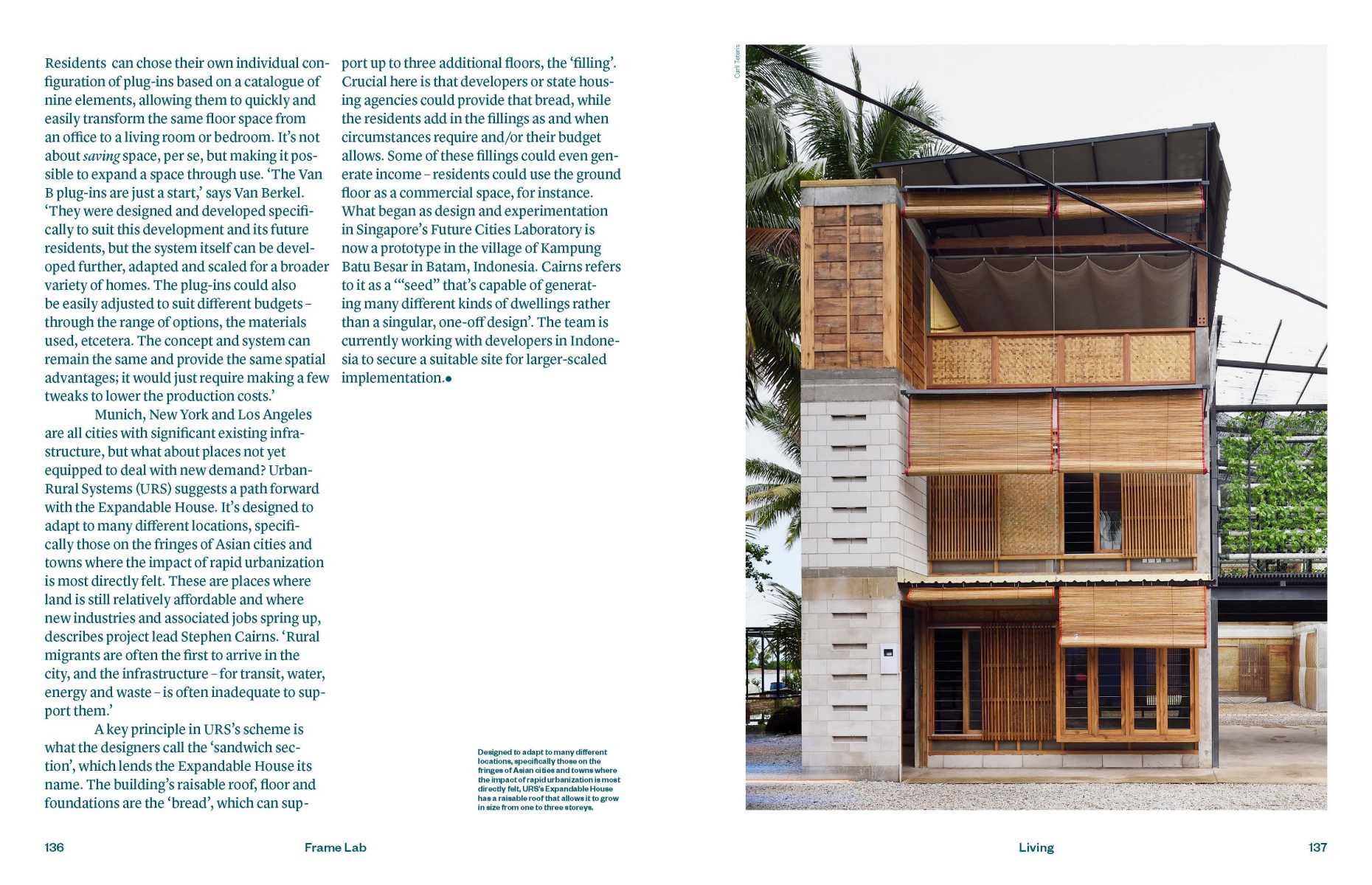How design can combat the housing crisis
The Expandable House, a prototype in the village of Kampung Batu Besar in Batam, Indonesia, is featured in Frame magazine for its approach to tackle housing challenges.

The shortage of adequate and affordable housing has become a global issue that needs to be tackled on many levels. In issue 141 of Download Frame magazine (PDF, 4.5 MB), the Expandable House project by Urban-Rural Systems (URS) was featured as one of the ways design can help to combat the housing crisis.
Expandable House was designed to adapt to different locations, particularly those on the fringes of Asian cities and towns where the impact of rapid urbanisation is most directly felt. These are places where land is still relatively affordable and where new industries and associated jobs spring up, describes Prof. Stephen Cairns, project leader of Expandable House and FCL Global director (Singapore hub).
A key principle is the ‘sandwich section’, which lends the Expandable House its name. The building’s raisable roof, floor and foundations are the ‘bread’, which can support up to three additional floors – the ‘filling’. Developers or state housing agencies could provide that bread, while the residents add in the fillings as and when circumstances require and when their budget allows.
What began as design and experimentation in Singapore’s Future Cities Laboratory is now a prototype in the village of Kampung Batu Besar in Batam, Indonesia. Prof. Cairns refers to it as a ‘'seed' that is capable of generating many different kinds of dwellings rather than a singular, one-off design’.